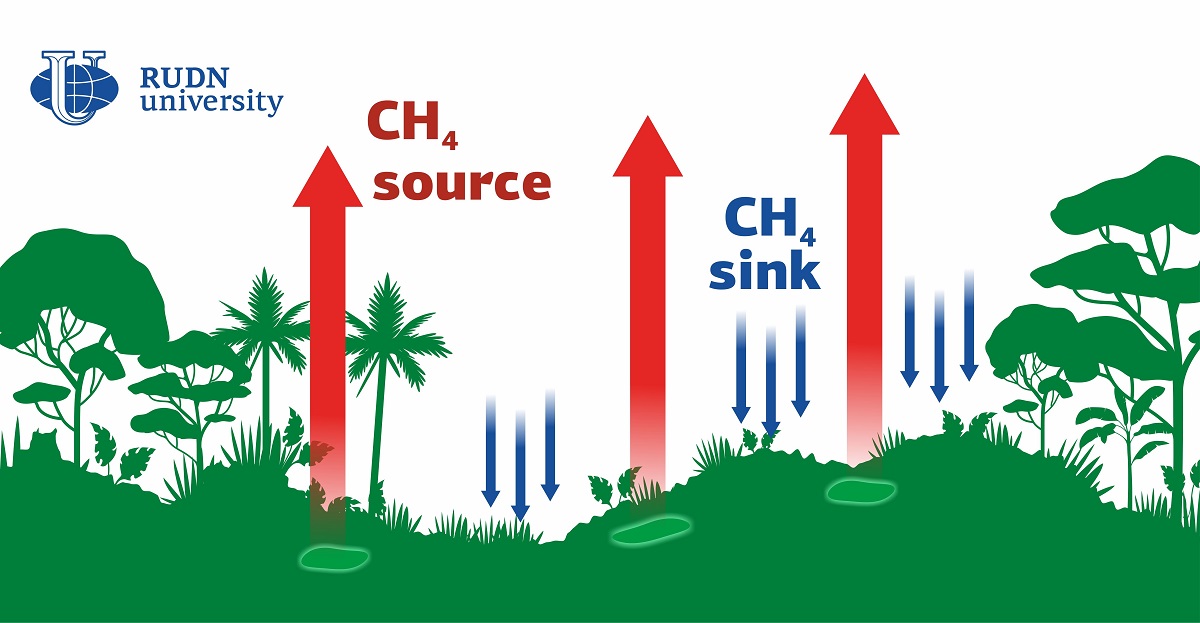RUDN University Biologists Studied the Effect of Jungles on Global Warming
Although the share of methane in the atmosphere is relatively small (less than 1%), its contribution to the greenhouse effect is 20 to 30 times bigger than that of the same amount of carbon dioxide. The tropics are one of the main sources of methane. Previously, soil scientists used to focus only on swampy tropical areas, because methane-producing microorganisms live and multiply in the anaerobic conditions of swamps. As for other regions of tropical forests, scientists believed they rather stored methane than emitted it. Still, regular forest soils can also be sources of methane emissions because of small anaerobic pockets in them. Although the intensity of methane production there is lower than in swamp forests, on the global scale, their existence changes our understanding of the climatic impact of rainforests. A soil scientist from RUDN University together with his colleagues traveled to the equatorial rainforests of Ancasa Conservation Area in Ghana to study the role of tropical ecosystems in methane circulation between the soil and the atmosphere.
“We studied two land plots, on top of a hill and at its foot. The plots had opposite conditions and completely different methane production and absorption processes. Our analysis confirmed that equatorial forest soils remain a continuous source of methane all year round,” said Riccardo Valentini, a PhD, the head of the Science and Research Laboratory “Smart Technologies for Sustainable Development of the Urban Environment in the Global Change” at RUDN University
The team spent two years monitoring methane flows from and to the soil. The average annual temperature in the area was around 25 ℃ and annual precipitation amounted to 1,500-2,000 mm with late March to mid-July and September to November being the wettest periods of the year. The measurements were taken in stationary closed clambers using gas chromatography.
According to the team, regions with high levels of methane emissions (both on top of the hill and at its foot) released more methane throughout the year than was absorbed by the soil in drier areas or during the dry season. The plot on top of the hill stored the gas quite slowly and its daily methane flow per square meter varied from absorbing up to 1.29 mg to releasing 0.44 mg of the gas. The lowland plot turned out to be the source of methane emissions. Although in the dry season it stored 0.67 mg per square meter every day, on other days of the year it released up to 188.09 mg.
“The annual methane budget of the soils in Ancasa Conservation Area (adjusted for landscape features) amounts to about 3.3 kg of methane per ha. Our results show that rainforests could be considered sources of methane emissions rather than its storages,” added Riccardo Valentini from RUDN University.
The results of the study were published in the Forests journal.
A RUDN agrotechnologist has identified wheat genotypes that are resistant to a dangerous fungal pathogen that infects plants even before the snow melts and reduces yields.
RUDN University engineers have calculated the parameters of a system that can prevent lunar power plants from overheating. These developments will be needed when planning for long-term lunar missions and colonizing the satellite.
Landfills are the third largest source of anthropogenic methane in the world. They account for ~11% of estimated global emissions. Methane is 80 times more powerful than carbon dioxide and is the second largest driver of man-made climate change. Scientists from around the world met at Zhejiang University's Hangzhou campus to determine the best available technologies for recovering energy and materials from non-recyclable residual waste.
